
Fundamentals
The designation “Jim Crow” describes a complex web of laws, social norms, and practices that enforced racial segregation and discrimination against African Americans in the United States, primarily from the late 19th century through the mid-20th century. This system was not merely a collection of legal statutes; it was a pervasive ideology that shaped every facet of life, dictating where Black individuals could live, work, learn, and even how they could present themselves to the world. Its true meaning extends beyond legalistic definitions, encompassing the lived experience of systemic oppression that sought to diminish the humanity and cultural heritage of Black communities. The Jim Crow era created a rigid societal structure, profoundly impacting the expression of identity, including deeply personal aspects like hair and appearance.
Understanding the Jim Crow framework involves recognizing its deep historical roots, stretching back to the period immediately following the abolition of slavery. While the Emancipation Proclamation promised freedom, the reality for many Black Americans remained fraught with peril and constraint. Southern states, determined to maintain racial hierarchy and control over Black labor, swiftly enacted “Black Codes,” which then evolved into the more comprehensive Jim Crow laws.
These legal strictures formalized racial separation, from separate waiting rooms and water fountains to segregated schools and public transportation. The insidious reach of Jim Crow extended into social etiquette, where unwritten rules governed interactions between Black and white individuals, often with severe consequences for any perceived transgression.
The Jim Crow system’s pervasive influence on Black communities extended to the very notion of beauty and self-presentation. It fostered a climate where Eurocentric beauty standards were upheld as the ideal, subtly and overtly coercing Black individuals to conform. This pressure manifested profoundly in the realm of hair, where natural Afro-textured hair was frequently deemed “unprofessional,” “unruly,” or “unclean”.
The expectation to straighten hair became a tool for survival, a means to secure employment, gain social acceptance, or simply navigate daily life with less friction. This historical context is essential for grasping the foundational impact of Jim Crow on Black hair heritage.
The Jim Crow system was a comprehensive societal structure of racial oppression, influencing every aspect of life, including deeply personal expressions of identity like hair.

Early Manifestations and Social Codes
The origins of the term “Jim Crow” itself trace back to a minstrel show character from the 1830s, a caricature designed to mock and demean African Americans. This theatrical representation normalized derogatory stereotypes, laying a cultural groundwork for the later legal and social enforcement of segregation. The character’s exaggerated features and mannerisms contributed to a societal perception of Black individuals as inherently inferior, justifying their subjugation. This early cultural denigration helped solidify the idea that Blackness, in its natural state, was something to be controlled or hidden.
Beyond formal laws, a complex set of unwritten social codes governed daily life under Jim Crow. These informal rules, though not codified, carried immense weight and often resulted in violence or economic ruin if violated. Black individuals were expected to defer to white individuals, avoid eye contact, and use separate entrances or facilities.
These social mandates permeated even the most intimate spaces, shaping self-perception and communal practices. The very act of existing within this framework necessitated a constant negotiation of identity, particularly for Black women whose appearance, including their hair, was often scrutinized and judged against an unattainable white ideal.
- Separate Amenities ❉ Public spaces like parks, restrooms, and transportation were divided by race, with facilities for Black individuals often inferior or nonexistent.
- Economic Restrictions ❉ Black communities faced severe limitations on employment opportunities, property ownership, and access to capital, reinforcing economic dependence.
- Educational Disparities ❉ Segregated schools for Black children were consistently underfunded, providing substandard education compared to white institutions.
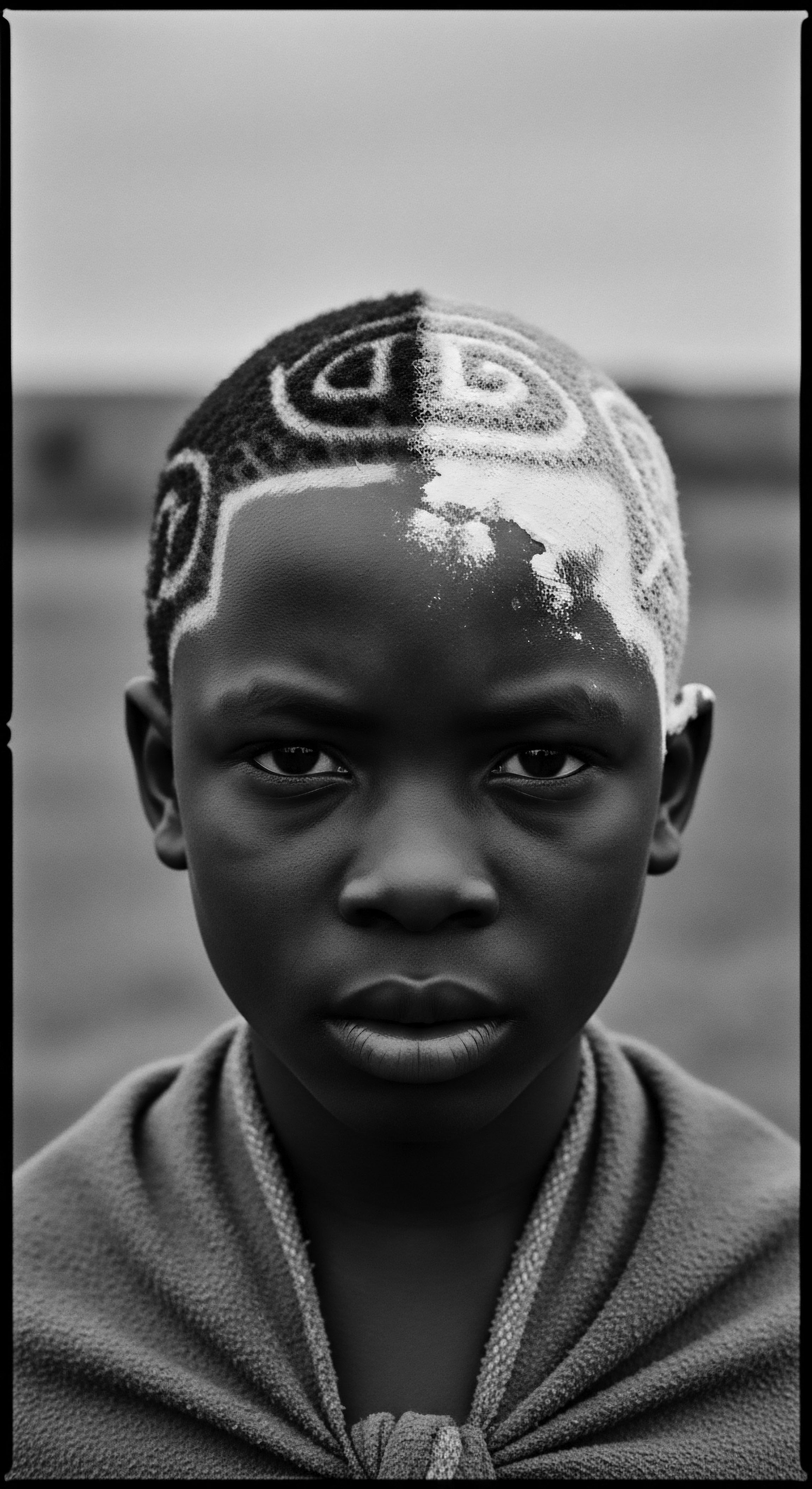
Hair as a Marker of Compliance
Within this oppressive atmosphere, hair became a visible marker of conformity or defiance. The dominant societal preference for straight hair meant that many Black individuals, particularly women, felt compelled to alter their natural textures. The hot comb, for instance, became a prevalent tool, offering a temporary method for straightening tightly coiled hair. This practice, while providing a degree of social acceptance and access to opportunities, also carried physical risks and a psychological burden, suggesting that one’s natural hair was somehow “bad” or “unacceptable”.
The pressure to straighten hair was not merely about aesthetics; it was about survival. Securing a job, gaining entry into certain public spaces, or simply avoiding harassment often hinged on presenting an appearance that aligned with Eurocentric norms. This historical reality underscores the profound significance of hair choices for Black individuals during the Jim Crow era, transforming personal grooming into a silent, yet potent, negotiation with systemic oppression. The choices made about hair reflected a deep understanding of the societal penalties for non-conformity.

Intermediate
Moving beyond the basic delineation of Jim Crow as a system of segregation, an intermediate understanding recognizes its intricate influence on the social, economic, and psychological landscapes of Black communities, particularly through the lens of textured hair heritage. This exploration delves into how the imposition of Eurocentric beauty standards, coupled with economic disenfranchisement, shaped the daily lives and cultural practices surrounding Black hair. The significance of Jim Crow here lies in its capacity to transform something as intrinsic as hair texture into a social currency, often determining access to opportunities and reinforcing a painful hierarchy.
The era fostered a duality ❉ on one side, a relentless external pressure to conform to white ideals, and on the other, a burgeoning internal economy and cultural resistance within Black communities. This resistance often found expression in the very spaces created by segregation, such as Black-owned beauty salons and barbershops. These establishments became more than just places for grooming; they served as vital social hubs, centers of community organizing, and safe havens where the burdens of Jim Crow could be discussed and momentarily set aside. The cultural meaning of hair, therefore, became deeply intertwined with the struggle for racial justice and self-determination.
Jim Crow transformed hair texture into social currency, creating external pressure for conformity while fostering internal cultural resistance within Black communities, notably in beauty spaces.
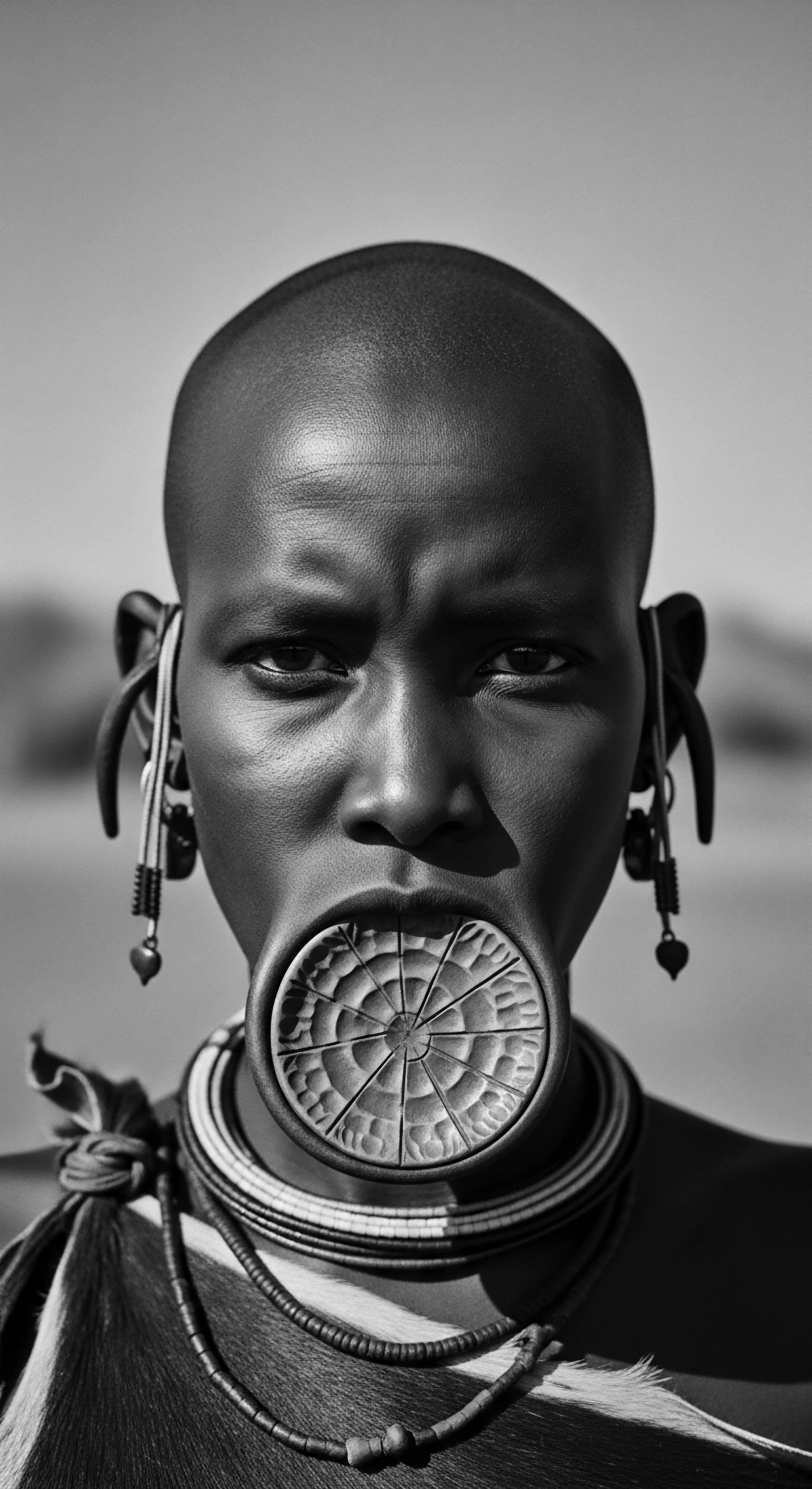
The Weight of Appearance ❉ Hair and Opportunity
During the Jim Crow era, the concept of “good hair” versus “bad hair” became deeply entrenched, reflecting a colorist hierarchy that privileged lighter skin tones and straighter hair textures. This preference was not merely aesthetic; it had tangible implications for social mobility and economic opportunity. Black individuals with hair that more closely resembled European textures often faced less discrimination in employment and social settings. This insidious form of prejudice created immense pressure for Black women to alter their hair, often through harsh chemical relaxers or hot combs, to achieve a more “acceptable” appearance.
The decision to straighten one’s hair became a calculated act of survival, a means to navigate a society designed to limit Black advancement. Donaldson explains that “Historically straightening our hair was an act of survival,” particularly concerning hiring practices. This adaptation, while understandable, also contributed to an internalization of negative self-perception, where natural hair was associated with inferiority. The struggle to reconcile one’s innate beauty with imposed societal standards became a central theme in the Black hair experience during this period.
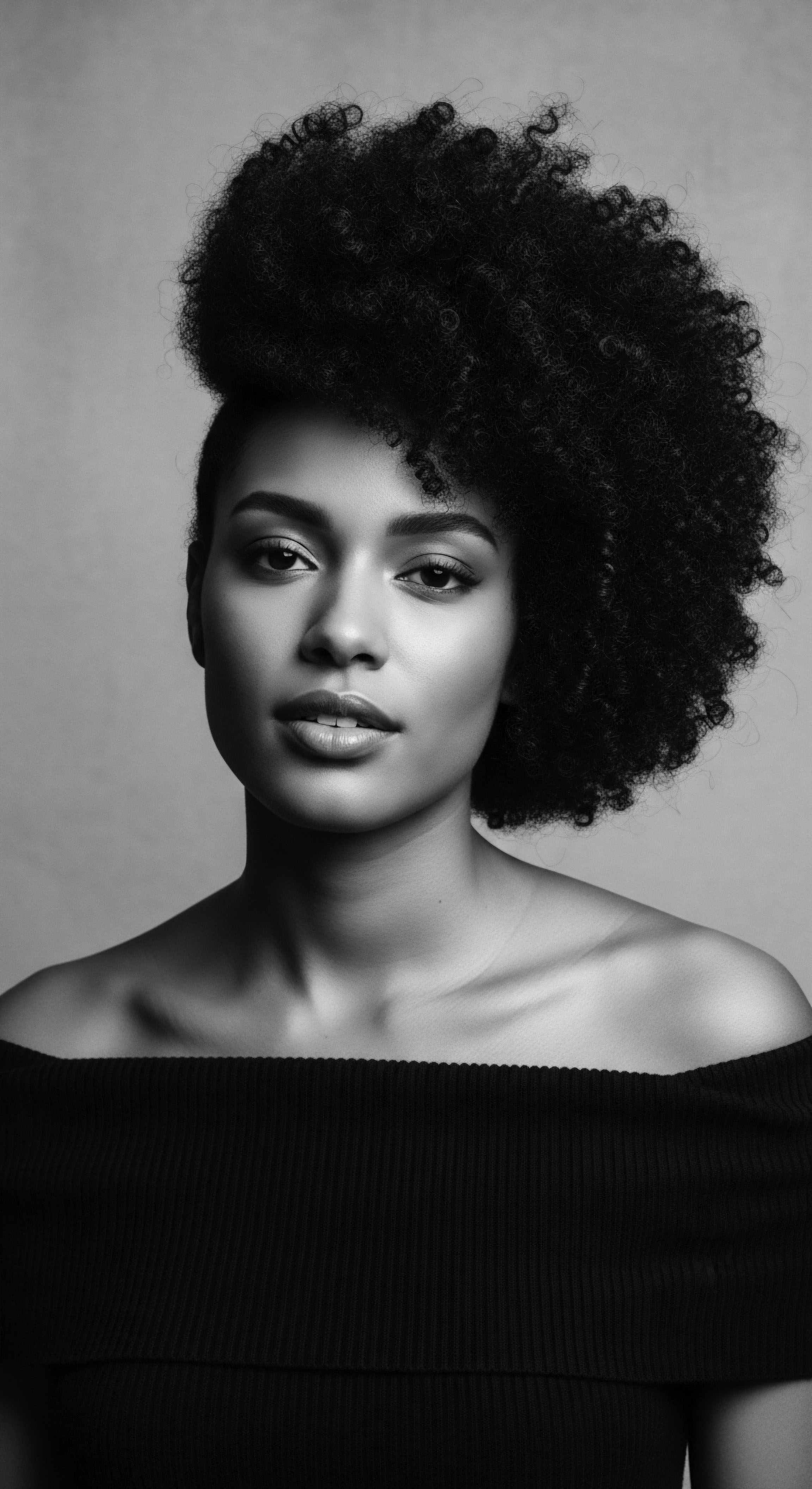
The Rise of the Black Beauty Industry
Paradoxically, the very segregation enforced by Jim Crow laws spurred the growth of a robust and self-sufficient Black beauty industry. White-owned salons would not serve Black women, creating an unmet demand that Black entrepreneurs swiftly filled. This entrepreneurial spirit provided Black women with economic autonomy in a landscape of limited opportunities. Madam C.J.
Walker stands as a powerful testament to this phenomenon. Born to formerly enslaved parents, Walker built an empire from hair and skin products, developing the “Walker system” of hair care that emphasized scalp health and hair growth. Her success not only made her a millionaire but also created thousands of jobs for Black women who became “Walker Agents,” selling her products door-to-door and opening their own salons.
These beauty enterprises were more than just businesses; they were pillars of community strength and resistance. Black beauty salons and barbershops served as critical social spaces where information was exchanged, political discussions unfolded, and collective action was organized, often outside the surveillance of white society. They provided a sanctuary, a place where Black women could find solace, support, and empowerment amidst the daily indignities of Jim Crow. This self-reliance in the face of systemic exclusion represents a profound aspect of Black heritage during this era.
| Traditional Practices (Pre-Jim Crow/Early Era) Oiling and Braiding ❉ Ancestral methods focused on scalp health, protective styling, and intricate braiding patterns for cultural expression. |
| Jim Crow Era Adaptations & Innovations Hot Comb Application ❉ Widely adopted for temporary straightening, offering a means of conformity to Eurocentric standards for social and economic survival. |
| Traditional Practices (Pre-Jim Crow/Early Era) Natural Hair Styling ❉ Embracing diverse textures, from coils to kinks, often adorned with cowrie shells or beads, signifying status and tribal identity. |
| Jim Crow Era Adaptations & Innovations Chemical Relaxers ❉ Introduction of lye-based solutions for more permanent hair straightening, driven by intense societal pressure for a "straight" appearance. |
| Traditional Practices (Pre-Jim Crow/Early Era) Community Grooming Rituals ❉ Hair care as a communal activity, passed down through generations, fostering bonds and sharing ancestral wisdom. |
| Jim Crow Era Adaptations & Innovations Emergence of Black-Owned Salons ❉ Segregation fostered a thriving Black beauty industry, creating spaces for economic independence and community organizing. |
| Traditional Practices (Pre-Jim Crow/Early Era) The necessity of adaptation under Jim Crow spurred innovation and entrepreneurship within Black communities, transforming hair care into a means of resilience and self-preservation. |

Academic
The academic understanding of Jim Crow transcends a mere chronicle of discriminatory laws; it represents a profound and insidious social engineering project designed to maintain white supremacy and economic exploitation following the formal end of slavery. Its comprehensive meaning encompasses not only the legal statutes that enforced racial segregation but also the deeply embedded social norms, economic structures, and psychological pressures that sought to define and control Black existence. From a scholarly perspective, Jim Crow operated as a dynamic, adaptive system, continually evolving to suppress Black agency and reinforce a racialized caste system. The scholarly examination of this period reveals its multifaceted impact on Black communities, particularly its profound influence on the perception and treatment of textured hair, transforming biological attributes into markers of social stratification and targets of systemic prejudice.
This rigorous delineation of Jim Crow requires a critical analysis of its ideological underpinnings, recognizing how it leveraged existing prejudices and created new ones to justify racial subjugation. It was a system that extended its tendrils into the most intimate aspects of Black life, dictating self-presentation and influencing internal communal standards. The imposition of Eurocentric beauty ideals, especially concerning hair, served as a powerful mechanism of control, subtly coercing conformity while simultaneously denigrating natural Black aesthetics. This intricate interplay between external pressure and internal response shaped a complex hair heritage, where acts of self-care often became acts of political resistance.

The Semiotics of Hair Under Jim Crow ❉ A Delineation of Control and Identity
Within the oppressive climate of Jim Crow, hair emerged as a significant semiotic system, a visible code through which racial hierarchies were communicated and enforced. The pervasive societal preference for straight hair was not simply a matter of aesthetics; it functioned as a powerful instrument of social control, delineating who belonged and who was marginalized. This preference was so deeply ingrained that it became a de facto requirement for access to employment and social acceptance, particularly for Black women. The historical trajectory of hair straightening within the Black community, therefore, must be understood not as a simple beauty trend, but as a complex adaptation to a hostile social environment.
The very act of altering one’s hair to conform to white standards, while a strategy for survival, carried a profound psychological burden. It subtly reinforced the notion that natural Black features were somehow undesirable or “unprofessional”. This pressure contributed to what scholars describe as an “esthetic trauma,” impacting self-esteem and racial identity development among Black individuals. The internalized message that kinky hair was “ignorant, uncivilized, and unruly” created a difficult internal conflict for many, as documented in research on the psychological impacts of hair discrimination.
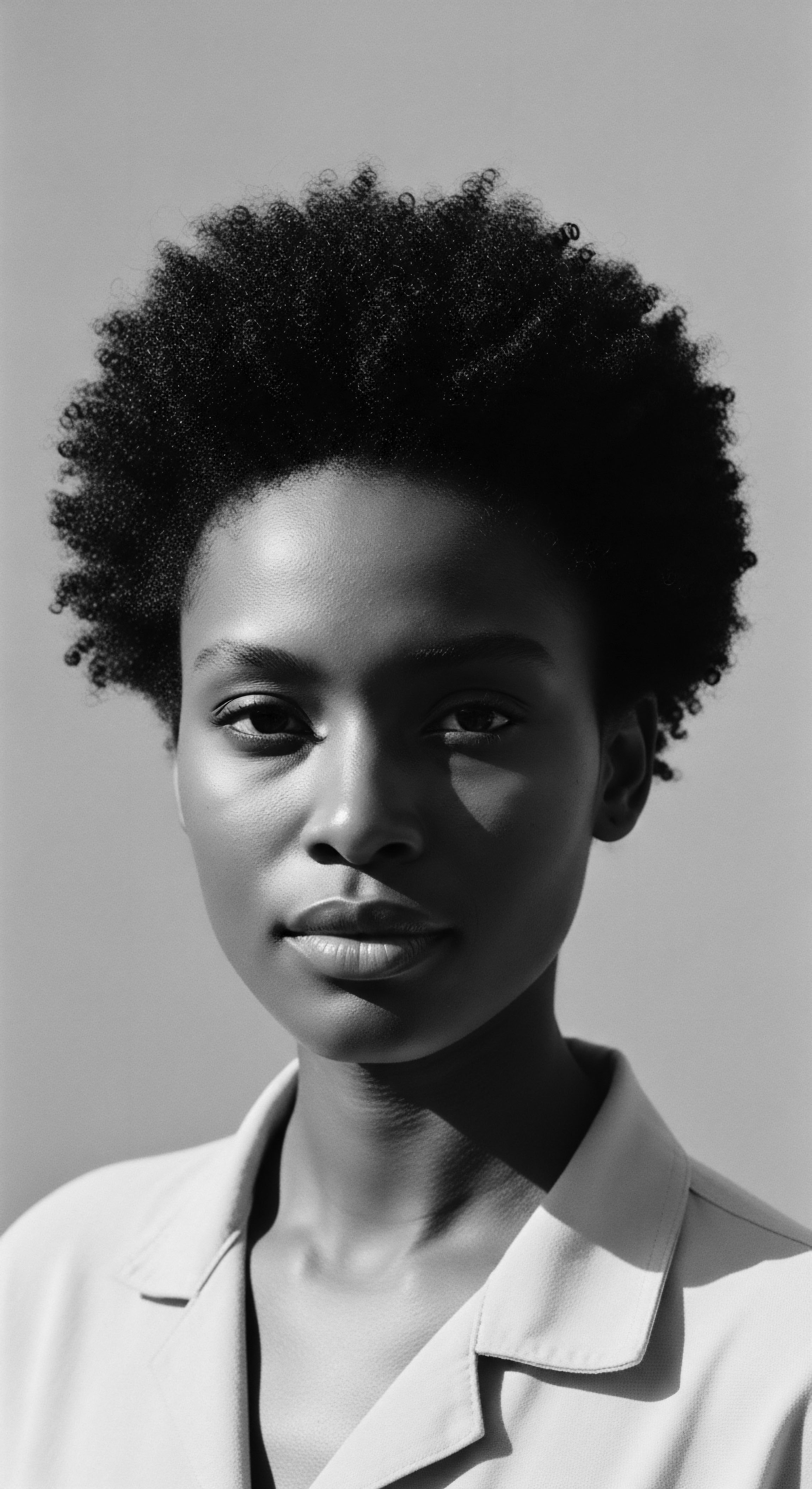
Economic Imperatives and Cultural Preservation
The Jim Crow era, while oppressive, simultaneously catalyzed the development of a resilient and self-sustaining Black economy, particularly within the beauty sector. The enforced segregation meant that white businesses largely refused to serve Black patrons, creating a void that Black entrepreneurs filled with remarkable ingenuity. This economic self-reliance became a vital component of resistance.
As historian Julia Kirk Blackwelder notes, “carefully groomed hair and immaculate dress armed women against the arrows of racial insults” and provided economic mobility. This strategic engagement with appearance allowed Black women to gain a foothold in the economy, often freeing them from the exploitative conditions of domestic service.
The flourishing of Black-owned beauty businesses, spearheaded by figures like Madam C.J. Walker and Annie Turnbo Malone, represents a compelling case study in adaptive entrepreneurship. Walker, for instance, not only created a line of hair care products but also established a vast network of “Walker Agents” – predominantly Black women – who gained financial independence by selling her wares and operating their own salons.
These salons and barbershops evolved into critical social and political institutions. They served as safe havens where Black women could discuss the injustices of Jim Crow, organize for civil rights, and cultivate a sense of collective identity, often under the radar of white surveillance.
The growth of Black beauty enterprises under Jim Crow exemplifies a strategic response to systemic exclusion, transforming personal care into a foundation for economic autonomy and communal resistance.
A significant statistic illuminating this connection between Jim Crow and textured hair heritage lies in the sheer volume of Black women who entered the beauty profession. By 1940, all 50 states regulated cosmetology, and despite continued segregation in beauty schools and salons, particularly in the South due to Jim Crow laws, this segregation paradoxically protected cosmetology jobs for African American women. Black women, often denied access to other professions, found a viable career path in beauty culture, providing essential services to their communities and establishing a powerful economic base. This demographic shift highlights the profound impact of Jim Crow on career choices and the strategic adaptations made within Black communities.
The enduring meaning of these beauty practices extends beyond economic survival. They represent a complex interplay of adaptation, resistance, and the preservation of cultural identity. While the pressure to straighten hair was undeniable, the methods and products used were often developed by Black innovators, tailored to the unique needs of textured hair.
This internal innovation, born from necessity, ensured that even within the confines of imposed beauty standards, a distinct Black hair culture persisted and evolved. The conversations within these beauty spaces fostered a sense of shared experience and solidarity, transforming mundane grooming rituals into acts of communal strength.
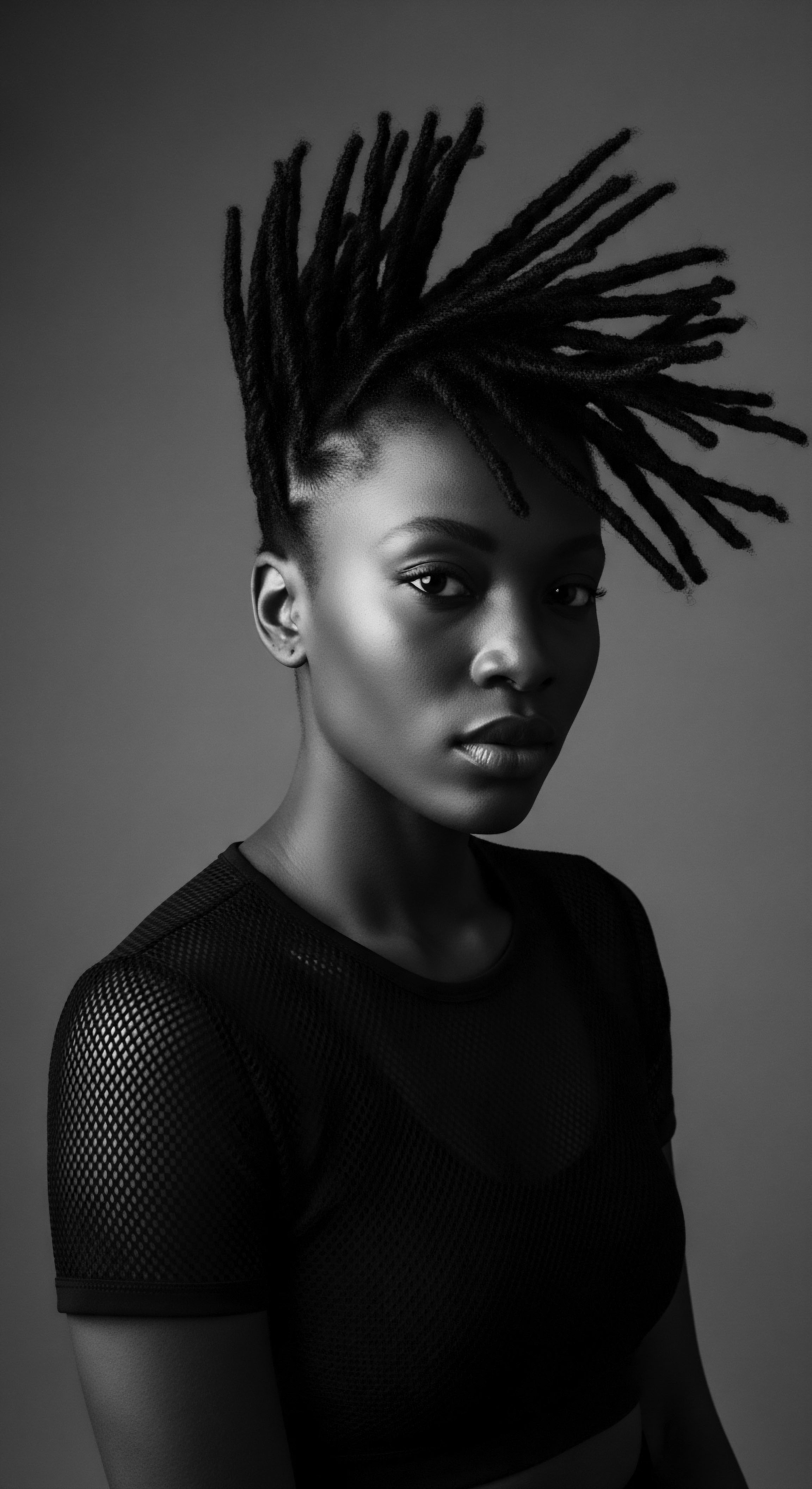
The Contested Terrain of Black Hair ❉ A Socio-Political Analysis
The history of Black hair under Jim Crow is a contested terrain, reflecting the ongoing struggle for self-definition against a backdrop of racial oppression. While straightening hair was a prevalent practice, it was not universally embraced without critique within Black communities. Some voices challenged straightening as an expression of racial shame, advocating for the embrace of natural textures as a symbol of racial pride.
This internal debate underscores the complex negotiations of identity that Black individuals faced. The tension between assimilation and affirmation became a central theme in Black beauty culture, predating and continuing beyond the Jim Crow era.
The very concept of “Black beauty” developed in direct response to the widespread disparagement of Black features in white-produced media and the exclusion of Black women from mainstream beauty standards. Black beauty culturists and activists consciously worked to redefine beauty on their own terms, valuing the diversity of Black hair textures and skin tones. This active construction of an alternative aesthetic was a powerful act of defiance against the dehumanizing images perpetuated by Jim Crow ideology. The development of distinct Black beauty standards, even when influenced by external pressures, provided a framework for self-acceptance and communal celebration.
- Internalized Colorism ❉ The Jim Crow era intensified existing colorist preferences, linking lighter skin and straighter hair to social and economic advantage within Black communities.
- Hair as Political Statement ❉ Later movements, like the Black Power movement, explicitly reclaimed natural hair as a symbol of resistance and racial pride, directly challenging the Eurocentric standards imposed by Jim Crow.
- Health Implications ❉ The widespread use of harsh chemical straighteners during this period had long-term health consequences for Black women, a legacy that continues to be examined in contemporary research.
The scholarly interpretation of Jim Crow’s influence on textured hair extends to the present day, informing discussions around hair discrimination and the ongoing fight for hair freedom. Laws like the CROWN Act, which prohibits discrimination based on hair texture and protective styles, directly address the lingering effects of historical prejudices rooted in the Jim Crow era. Understanding the historical context of Jim Crow is therefore not merely an academic exercise; it is essential for comprehending the persistent challenges faced by Black individuals in expressing their authentic selves through their hair. The legacy of Jim Crow continues to shape perceptions and experiences, underscoring the enduring need for cultural affirmation and legal protection for textured hair.
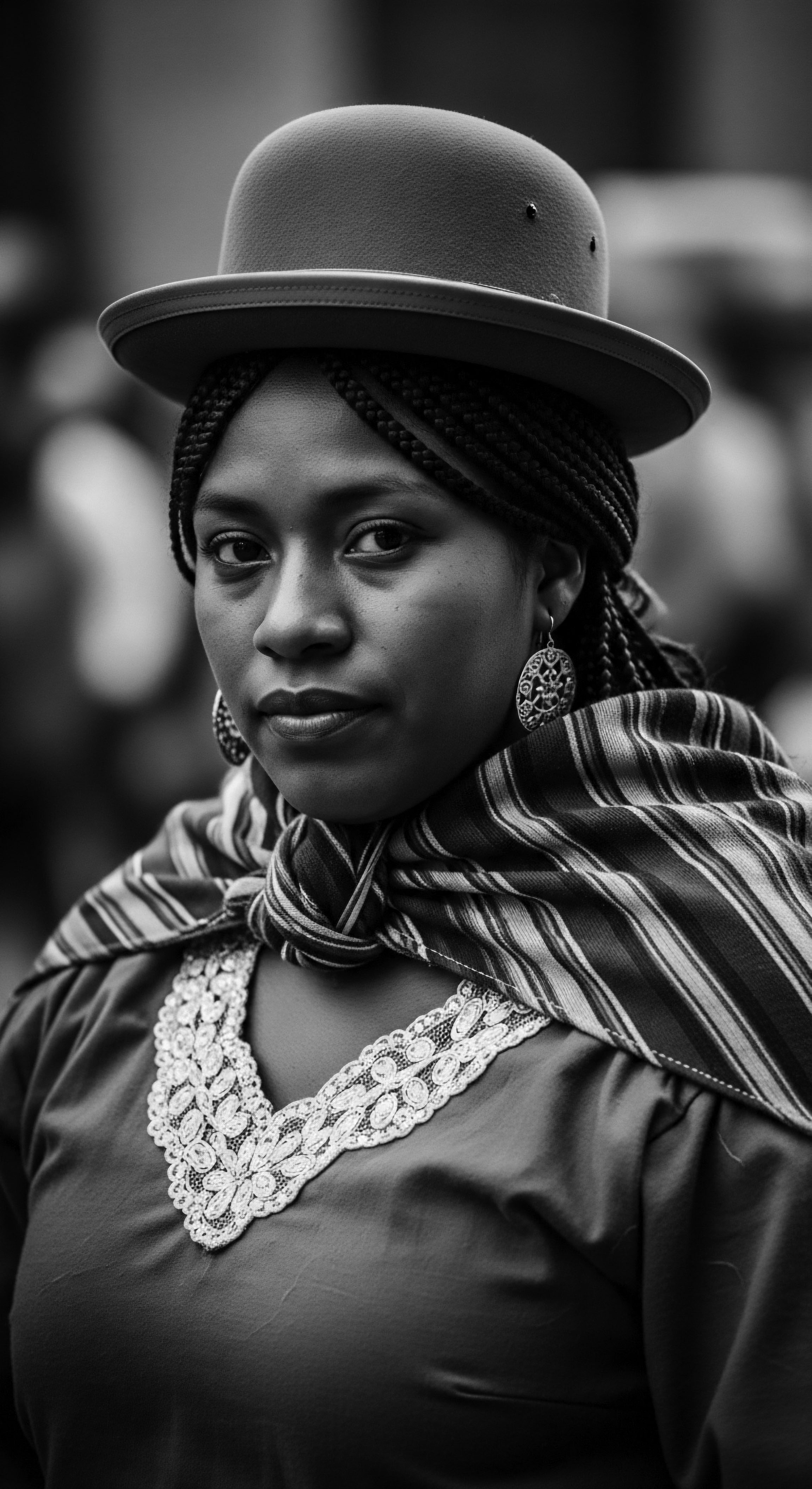
Reflection on the Heritage of Jim Crow
The echoes of Jim Crow, though the formal laws have long been dismantled, continue to reverberate through the living strands of textured hair heritage. This era, a period of profound oppression, paradoxically forged a resilience and ingenuity within Black communities that remains a cornerstone of our collective story. The choices made about hair during those decades—whether to straighten for survival or to style in defiance—were never superficial.
They were deeply meaningful acts, etched into the ancestral memory, shaping the tender thread of care and the unbound helix of identity. The story of Jim Crow and Black hair is a testament to the enduring human spirit, finding ways to nurture beauty and assert selfhood even amidst systemic attempts to erase it.
From the elemental biology of hair, an inheritance of unique coil patterns and robust strength, to the living traditions of care passed down through generations, Jim Crow cast a long shadow. Yet, within that shadow, light was created. The kitchen beauticians, the thriving Black-owned salons, the whispered conversations over hot combs and hair grease—these were the spaces where ancestral wisdom met contemporary necessity.
These environments became sanctuaries, fostering community, solidarity, and a quiet, yet potent, form of resistance. The knowledge exchanged within those walls, the shared rituals of cleansing, conditioning, and styling, preserved a heritage of self-care that transcended the imposed limitations of the outside world.
Today, as we witness a powerful resurgence of natural hair affirmation, we are observing the flowering of seeds planted in those challenging times. The conscious choice to wear coils, kinks, and locs openly is a direct reclaiming of identity, a declaration that the standards of beauty imposed by Jim Crow hold no dominion over the spirit. This contemporary movement draws strength from the historical struggle, honoring the sacrifices and adaptations of those who came before.
The heritage of textured hair, therefore, is not merely a chronicle of past practices; it is a dynamic, evolving narrative of survival, creativity, and profound self-love. It reminds us that even from the crucible of oppression, a powerful legacy of beauty, strength, and unapologetic authenticity can emerge, continually shaping the future of Black and mixed-race hair experiences.

References
- Blackwelder, J. K. (2003). Styling Jim Crow ❉ African American Beauty Training during Segregation. Texas A & M University Press.
- Bundles, A. L. (2001). On Her Own Ground ❉ The Life and Times of Madam C. J. Walker. Scribner Books.
- Byrd, A. D. & Tharps, L. D. (2001). Hair Story ❉ Untangling the Roots of Black Hair in America. St. Martin’s Press.
- Craig, M. L. (2002). Ain’t I a Beauty Queen? Black Women, Beauty, and the Politics of Race. Oxford University Press.
- Greene, D. W. (2017). Splitting Hairs ❉ The Eleventh Circuit’s Take on Workplace Bans Against Black Women’s Natural Hair in EEOC v. Catastrophe Management Solutions. University of Miami Law Review, 71, 987-1001.
- Patton, T. O. (2006). Hey Girl, Am I More Than My Hair? ❉ African American Women and Their Struggles for Hair Freedom. Peter Lang.
- Rooks, N. M. (1996). Hair Raising ❉ Beauty, Culture, and African American Women. Rutgers University Press.
- Shaw, S. J. (1995). What a Woman Ought to Be and To Do ❉ Black Professional Women Workers During the Jim Crow Era. University of Chicago Press.
- Walker, S. (2007). Style and Status ❉ Selling Beauty to African American Women, 1920-1975. University Press of Kentucky.
